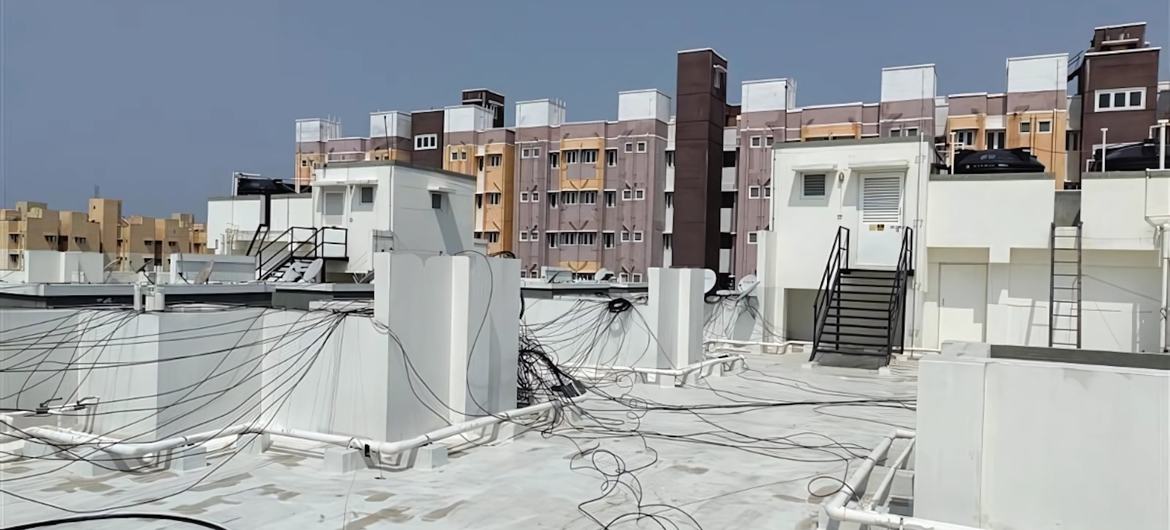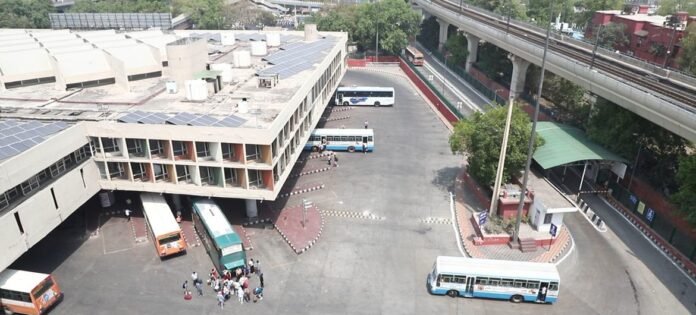Over the past several years, the impact of heat in India has been extremely serious: high temperatures have become common due to death, heat wave news and school closure.
To protect against the side effects of heat, it is important that natural, environmentally friendly cooling systems should be encouraged and cool the atmosphere without electricity or machine.
The shadowy tree, the construction of green sites, reflects the cold floor and sunlight. Improved urban settlements and nature-based solutions that can be kept at home, building or outside the temperature.
Balakrishna Pisupati, head of the India Office of the United Nations Environment Program (UNEP), said, “All countries should start reducing greenhouse gas emissions, yet the extreme fluctuations at the temperature will last long.”
“To deal with the level we are seeing, the people of India need a step that does not further enhance the climate crisis.”
He said that this time where natural cooling techniques could become an important solution.
‘Passive cooling’ does not take energy and like air -conditioning system, these measures do not produce greenhouse gas emissions, which do not further enhance the climate crisis.
India has debuted worldwide in natural cooling, incorporated these measures in national policies and urban plans, in most cases providing important support to many schemes.
UNEP led, Delhi’s busy Kashmiri Gate Intestate bus stand is planned to convert the roof to a “cold roof”.
Effort
India’s capital, Delhi, is one of the world’s warm metro. In early May this year, the temperature here was felt up to 50 degrees centigrade that moisture damaged people.
Under the UNEP -led “Cool Coalition” initiative, the roof of the busy Kashmiri Gate International bus station in Delhi is being converted into a “cool roof”.
This roof is spread across 1.5 million square feet and it will be covered with a surface that will reflect up to 80 percent of the solar heat, which is expected to relieve one million passengers every day.
The project, which is run by Switzerland’s Development and Cooperation Organization, is part of reducing the effects of heat waves by keeping the protection of the weak parts of Delhi.

In collaboration with UNEP, passive cooling systems like natural ventilation and insulating walls are being added to the affordable housing project of the Government of India.
The houses built under social schemes make cool
Under the main mantra of India – PMAE, so far millions of families have been provided safe and affordable homes. However, release from heat in this house is still a big challenge.
UNEP is now encouraging rooms to ventilate with the natural system of this scheme and keeps the cover on the walls so that the cooling of the house does not go out.
The government’s goal is to build a million houses by 2021. By incorporating natural cooling system, electricity costs can be reduced by 35 percent, internal temperature can be reduced to 3 degrees centigrade, so that people do not require cooling for a large period within a year.
In Tamil Nadu, UNEP is preparing this national financial model, including several government agencies, which makes it easier to implement passive cooling in government houses.

UNEP -LED ‘Cool Coalition’ and Tamil Nadu State Government have taken steps to keep the roofs cool in Chennai’s affordable residential projects.
Chennai attempt
Chennai is a major industrial city in southern India, which is affected by a horrible heat every year before the monsoon. In the absence of dense settlements, high buildings and green zones, the people of this city fight the burning heat with 1.2 billion populations.
Under a UNEP initiative, collecting information about the hottest parts of the city (hit mapping: Local authorities have been notified of how to reduce temperature by natural ingredients and natural strategies.
These recommendations are now being included in the master plan in Chennai, which can reduce the temperature to 4 degrees centigrade and reduce the diseases caused by heat by 15-30 percent.
The project has received the Swiss Agency, the Denmark government, clean cooling initiatives and the World Bank support.
To strengthen the city plan
In most cities of India, heat mapping has no quality or scientific method, which is necessary to plan heat.
To deal with this challenge, UNEP and partners, with the central and state governments, are developing new strategies to identify the hottest regions of the city. Also, these national guidelines are being prepared, so that disaster relief funds can be used in temperature reduction projects.
The heat in Tamil Nadu has been declared an official disaster. With the help of UNEP, the state government, schools, factories and government houses are now identified and implemented by passive cooling solutions.
This article is first Here Published.

